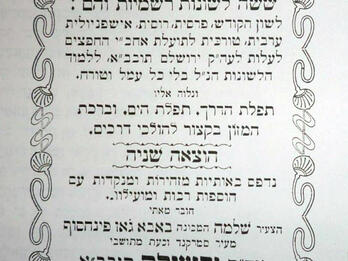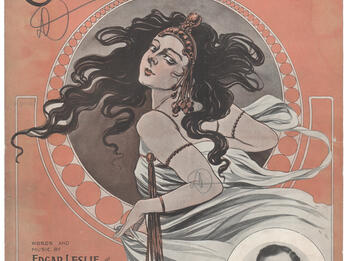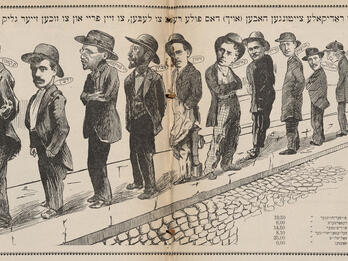Literary Science
Foreword
The purpose of this work is to acquaint the Yiddish reader with the theory, structure, and various forms of belletristic literature in general and Yiddish literature in particular.
The need for a work that would explain briefly, clearly, and in comprehensible language all literary concepts has been felt in the Yiddish book market for some time now. This lacuna became especially apparent recently: Yiddish literature has expanded greatly both in terms of quantity and quality, has acquired new literary forms, and has valued the works of older writers as increasingly treasured collections. I believe that the publication of this book will eliminate this deficiency.
In making my selections of literary scholarship I focused primarily on Yiddish literature. For this purpose, in almost every paragraph the explanation of a concept is followed by an example taken from the best Yiddish writers. Only when explaining literary forms that do not exist in Yiddish literature was I compelled to choose examples from other literatures. After all, the purpose of this work is to acquaint the reader with all literary forms that exist both in Yiddish and in world literature more broadly.
The book is divided into two volumes. The first concentrates more on Yiddish stylistics, the development of the Yiddish language, sentence structure, various language forms, and figures of speech, and only partially on literary forms. Literary forms are considered and discussed explicitly in the second volume.
Each volume is equipped with a table of contents, and at the end of the whole book are two alphabetized indices: an index of all the concepts that are explained in the book and the locations where they are mentioned, and another one listing all the authors whose works are used as examples in the book.
Finally, I feel obliged to express gratitude to all my friends who aided my work with advice and assistance. I thank especially Mr. Krinsky for his conscientious editing, his many remarks, and assistance in gathering material, as well as Mr. H. D. Nomberg for his help in correcting the text. [ . . . ]
[Volume 2] Table of Contents
- The Difference between Prose and Poetry 7
- Prose -
- Poetry 8
- Prosaic and Poetic Works 10
- Prosaic Works -
- Descriptive Works in General 11
- General Scholarly and Artistic Descriptions 12
- Characteristics 14
- Travelogues 16
- Fantastic Travelogues 22
- Historical Works -
- Biography -
- Autobiography 30
- Memoirs 34
- Chronicles, Communal Record Books, and Minute Books 48
- History 50
- Philosophical or Scholarly Works. Criticism 60
- Speeches 63
- Prophecies -
- Greek and Roman Rhetorical Art, Parliamentary Speeches, Court Speeches 64
- Homilies and Sermons, the Teachings of Itinerant Jewish Preachers 66
- Modern Speeches -
Poetic Works
- Ideal, Type, Literary Streams, Positive Type, Negative Type, Idealistic, Realistic, Naturalistic, Fantastic 77
- The Classification of Poetic Works 79
- Folk Poetry and Its Meaning 80
- Epic Poetry -
- Folk Epic 81
- Folktales 82
- Folk Songs: Epic, Historical, National-Religious, Messianic 83
- Artistic Epics 85
- Epic Poems 86
- The Classical Epic Poem: Iliad, Odyssey, Aeneid -
- The Mock-Classical Poem 89
- Modern Epic Poem, Historical Epic Poem, Lyrical Epic Poem -
- Idylls 94
- Novels 95
- Short Story, Novella 97
- Legends, Agadah -
- Ballads 102
- Fables 103
- Lyrical Poetry 107
- Lyric Folk Songs -
- Religious and Hasidic Songs 108
- Love Songs 109
- Soldier Songs 110
- Family Songs 111
- Various Folk Songs 114
- Artistic Lyric 115
- Elegy -
- Ode 117
- Hymn, Psalm 123
- Satire -
- Generic Lyrical Poems, Romances, Motives, Lullabies 126
- Dramatic Works, Acts, Scenes 134
- The Greek Drama 136
- The Modern European Drama 137
- Tragedy 139
- The Development of the Tragedy 140
- Comedy 141
- Drama Proper 142
- Dramatic Art on the Yiddish Stage 143
- Other Dramatic Works, oper, oper, Melodrama, Vaudeville, Farce 144
Translated by
.
Credits
A. B. Rozenshteyn, Literatur visnshaft: Lehrbukh far di yidishe un algemeyne literatur-teorie mit a groyse [sic] zamlung mustern fun di beste yidishe poeten un prozaiker in 2 teylen [Literary Science], 2 vols. (Warsaw: Ha-or, 1908), 1:3–4; 2:5–6.
Published in: The Posen Library of Jewish Culture and Civilization, vol. 7.





